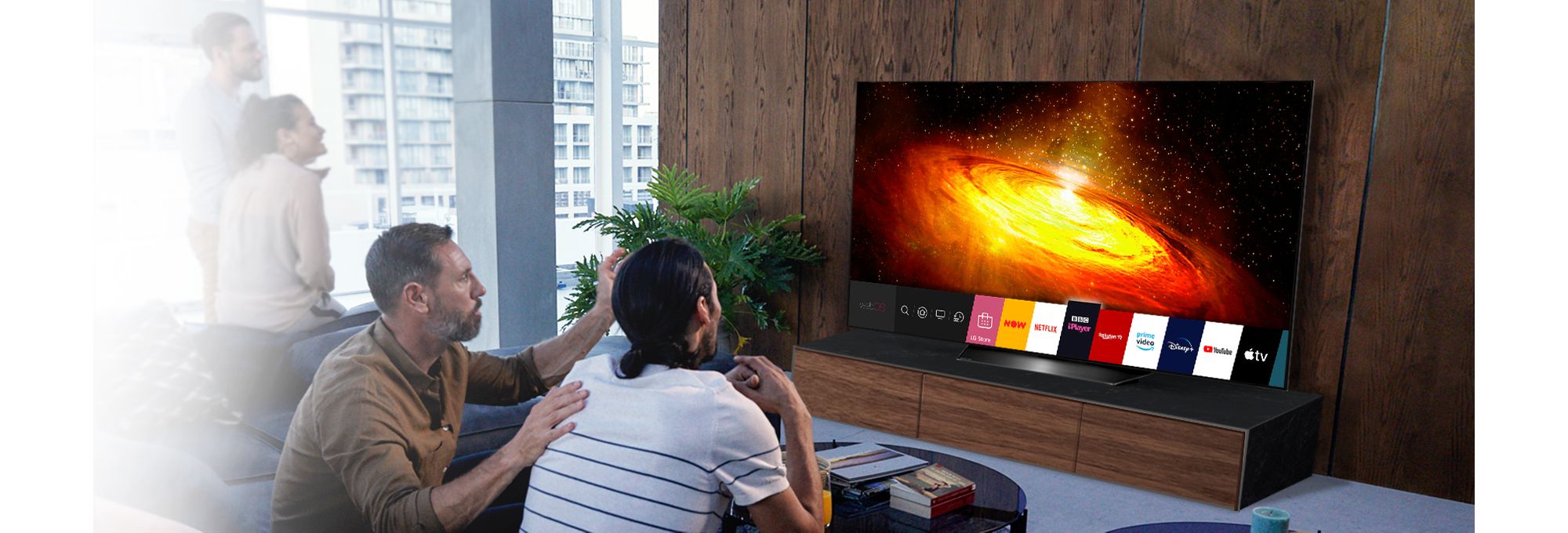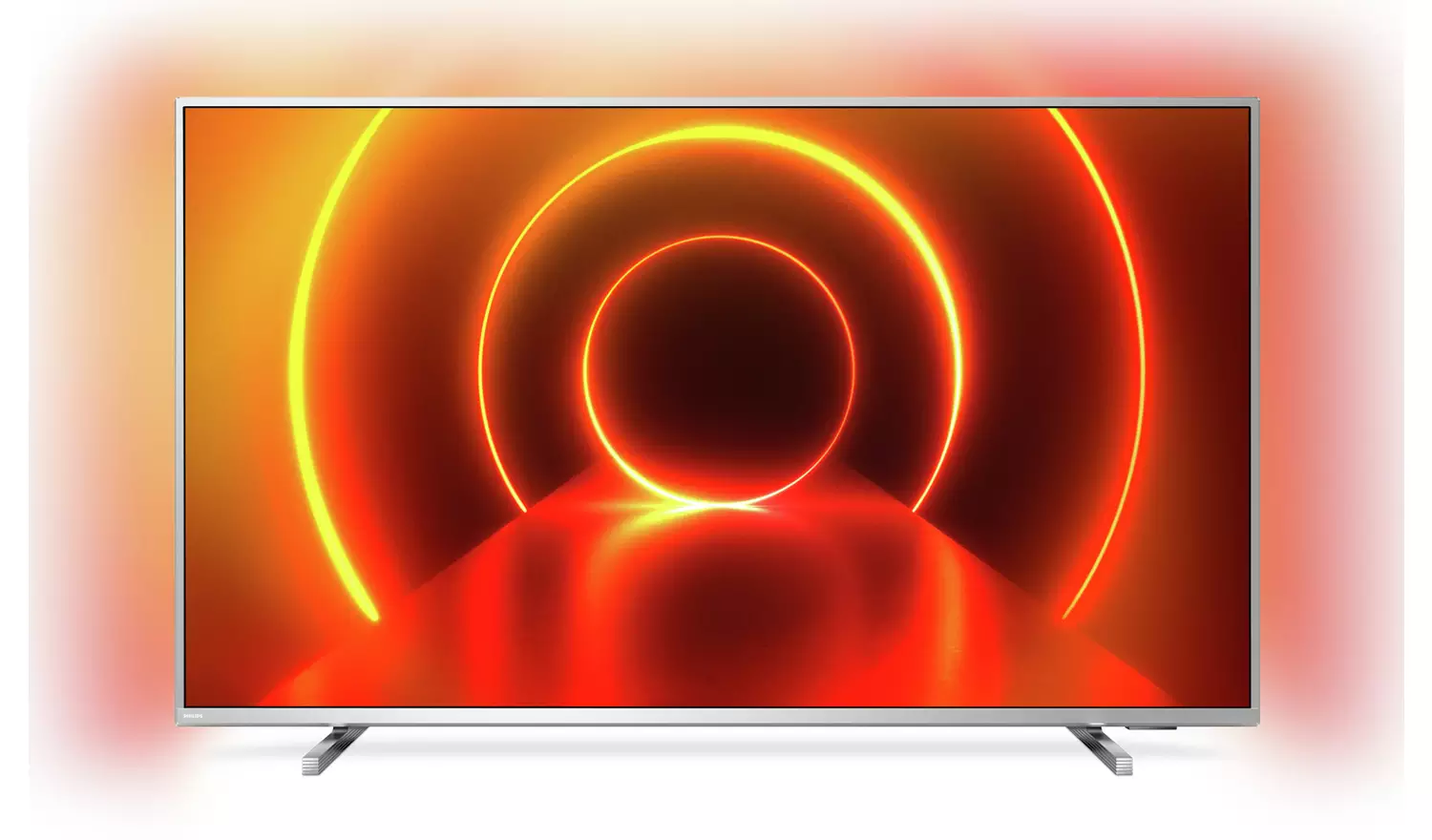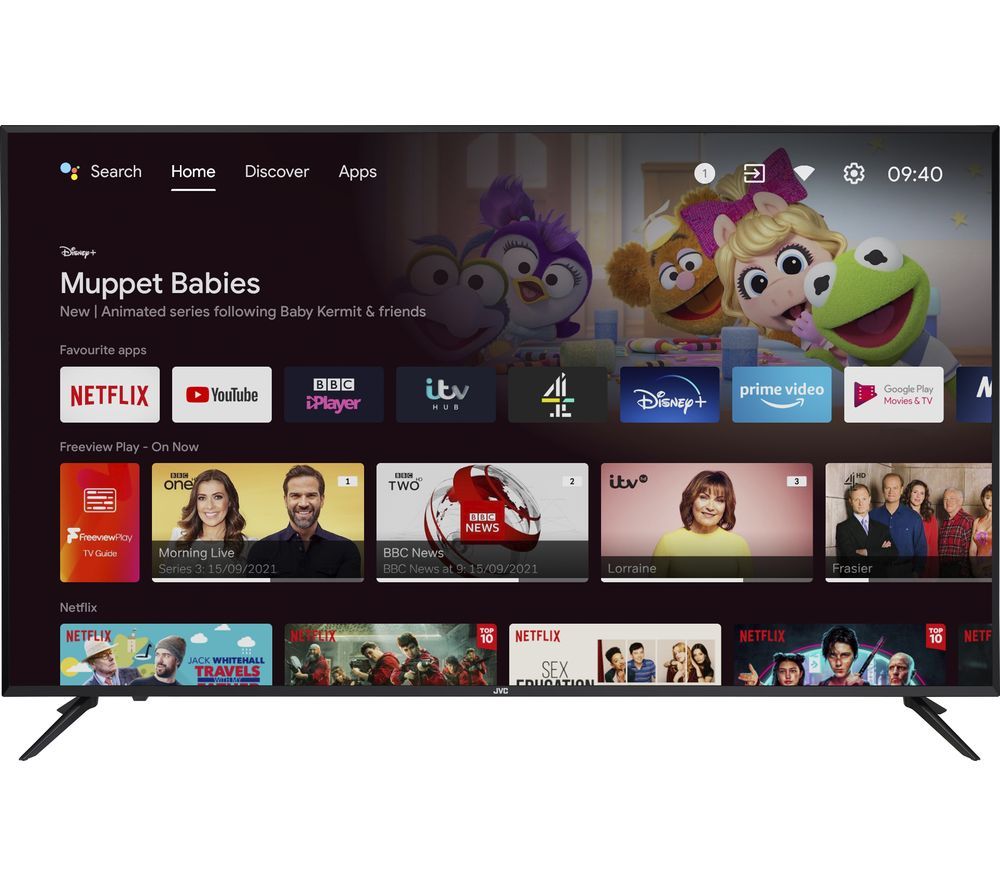LG OLED55BX6LB 55″ Smart 4K Ultra HD OLED TV
4K Ultra HD – Stunning sharpness, crystal clarity. a7 Gen3 Intelligent Processor 4K optimises images. Smart TV – catch up, movies & more. AI Sound – audio is optimised based on your environment. G-SYNC compatible – ideal for gaming.
Upgrade your old telly with this 55-inch LG TV, featuring a 4K Ultra HD screen, for brilliant images at four times the resolution of Full HD. With an OLED display, the pixels give out their own light instead of being backlit, which means on top of incredible contrast, you get true blacks, as the pixels simply switch off. Plus, the α7 Gen3 Intelligent Processor analyses your content and enhances the clarity and sharpness of the picture, as well as the sound. The audio features don’t stop there – AI Sound tech uses spatial awareness to adjust the settings for the best listening experience. And it’s smart, of course, so you can access streaming and catch-up services. What’s more, you get NVIDIA® G-SYNC compatible support, so you’ll get less lag and flicker on top of smoother gaming.
We want you to fully enjoy your new TV, so please be careful when unpacking it – pull it out of the box using the edges so that you don’t damage the screen. If you need to return your TV for any reason, we just ask that you don’t pack the plug in front of the screen as it could damage the TV in transit.
- 4K Ultra HD – Stunning sharpness, crystal clarity
- a7 Gen3 Intelligent Processor 4K optimises images
- Smart TV – catch up, movies & more
- AI Sound – audio is optimised based on your environment
- G-SYNC compatible – ideal for gaming
Additional information
| Dimensions | (H)74.4 x (W)122.8 x (D)24.6 |
|---|---|
| Manufacturer Warranty | 1 Year |
4K, 4-K or 4k may refer to:
- 4000 (number)
- Four kibibytes (4 × 1024 bytes, better written 4 KiB)
- 4K disk sector size (Advanced Format)
- 4K demoscene compo, a computer art competition using programs limited to 4 kibibytes
- The Java 4K Game Programming Contest
- 4K resolution, a collective term for digital video formats having a horizontal resolution of approximately 4,000 pixels
- 4K UHDTV, an ultra-high-definition television format
- 4K, the IATA airline code for Askari Aviation
- 4K, an alternative name for Cuatro Cabezas (Four Heads), an Argentine multimedia production company.
- 4K, model of Toyota K engine
- 4K, the production code for the 1976 Doctor Who serial The Brain of Morbius
- 4KScore test for prostate cancer screening
- Kenn Borek Air, a Canadian airline IATA code
LG Corporation (or LG Group), formerly known as Lucky-Goldstar, is a South Korean multinational conglomerate founded by Koo In-hwoi and managed by successive generations of his family. It is the fourth-largest chaebol (family-run conglomerate) in South Korea. Its headquarters are in the LG Twin Towers building in Yeouido-dong, Yeongdeungpo District, Seoul. LG makes electronics, chemicals, household appliances, and telecommunications products and operates subsidiaries such as LG Electronics, Zenith, LG Display, LG Uplus, LG Innotek, LG Chem, and LG Energy Solution in over 80 countries.
An organic light-emitting diode (OLED), also known as organic electroluminescent (organic EL) diode, is a type of light-emitting diode (LED) in which the emissive electroluminescent layer is an organic compound film that emits light in response to an electric current. This organic layer is situated between two electrodes; typically, at least one of these electrodes is transparent. OLEDs are used to create digital displays in devices such as television screens, computer monitors, and portable systems such as smartphones and handheld game consoles. A major area of research is the development of white OLED devices for use in solid-state lighting applications.
There are two main families of OLED: those based on small molecules and those employing polymers. Adding mobile ions to an OLED creates a light-emitting electrochemical cell (LEC) which has a slightly different mode of operation. An OLED display can be driven with a passive-matrix (PMOLED) or active-matrix (AMOLED) control scheme. In the PMOLED scheme, each row and line in the display is controlled sequentially, one by one, whereas AMOLED control uses a thin-film transistor (TFT) backplane to directly access and switch each individual pixel on or off, allowing for higher resolution and larger display sizes.
OLEDs are fundamentally different from LEDs, which are based on a p-n diode structure. In LEDs, doping is used to create p- and n-regions by changing the conductivity of the host semiconductor. OLEDs do not employ a p-n structure. Doping of OLEDs is used to increase radiative efficiency by direct modification of the quantum-mechanical optical recombination rate. Doping is additionally used to determine the wavelength of photon emission.
An OLED display works without a backlight because it emits its own visible light. Thus, it can display deep black levels and can be thinner and lighter than a liquid crystal display (LCD). In low ambient light conditions (such as a dark room), an OLED screen can achieve a higher contrast ratio than an LCD, regardless of whether the LCD uses cold cathode fluorescent lamps or an LED backlight.
OLED displays are made in a similar way to LCDs, including manufacturing of several displays on a mother substrate that is later thinned and cut into several displays. Substrates for OLED displays come in the same sizes as those used for manufacturing LCDs. For OLED manufacture, after the formation of TFTs (for active matrix displays), addressable grids (for passive matrix displays), or indium tin oxide (ITO) segments (for segment displays), the display is coated with hole injection, transport and blocking layers, as well with electroluminescent material after the first two layers, after which ITO or metal may be applied again as a cathode. Later, the entire stack of materials is encapsulated. The TFT layer, addressable grid, or ITO segments serve as or are connected to the anode, which may be made of ITO or metal. OLEDs can be made flexible and transparent, with transparent displays being used in smartphones with optical fingerprint scanners and flexible displays being used in foldable smartphones.






by Adam
Brilliant TV. My first Oled spec and couldn’t be happier
by Steve
Awesome not disappointed after just buying from the pictures and spec online very happy boy.
by Sharon
We love this TV. The picture quality is excellent. It is a big improvement on our old LG. It starts up really quickly and is easy to navigate.
by Les
Love my oled tv, I have 3 other lg 4k smart TV non oled, even those are great, you can see massive difference in quality of picture and audio even without a soundbar, strongly recommend
by Marc
The TV is now wall mounted and looks fantastic we have 3 LG,s in the house but only one with the OLED screen and it is fabulous the colours are amazing I had originally wanted a TV with a 65” screen but after weeks of checking all the options and with a set budget I finally decided that this 55” ticked all the boxes.
by Frank
Absolutely love this TV, best one I’ve ever bought. The picture and sound quality is out of this world. The price was great and delivery was quick and professional, I’ve purchased all my main appliances from AO, wouldn’t buy from anywhere else!